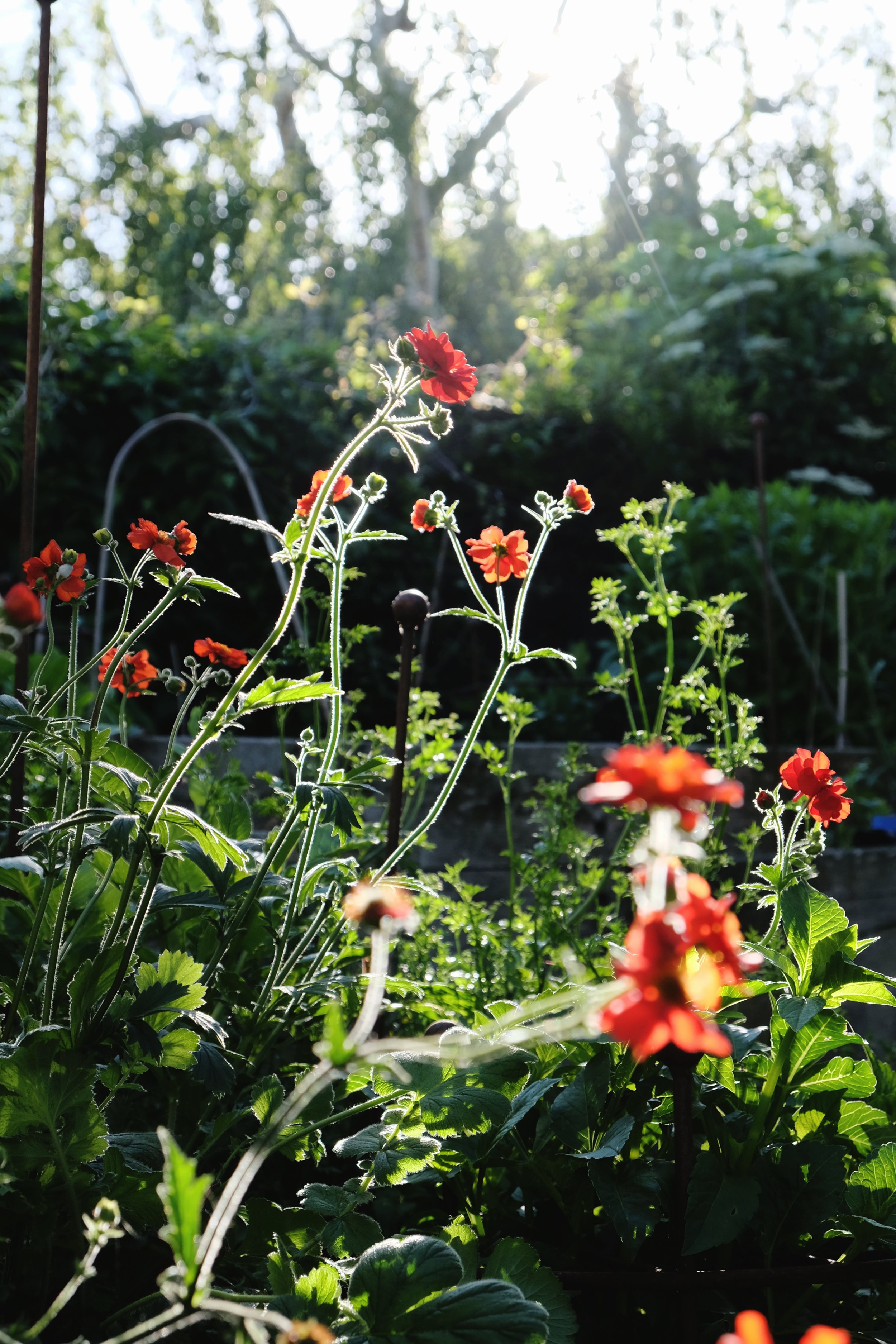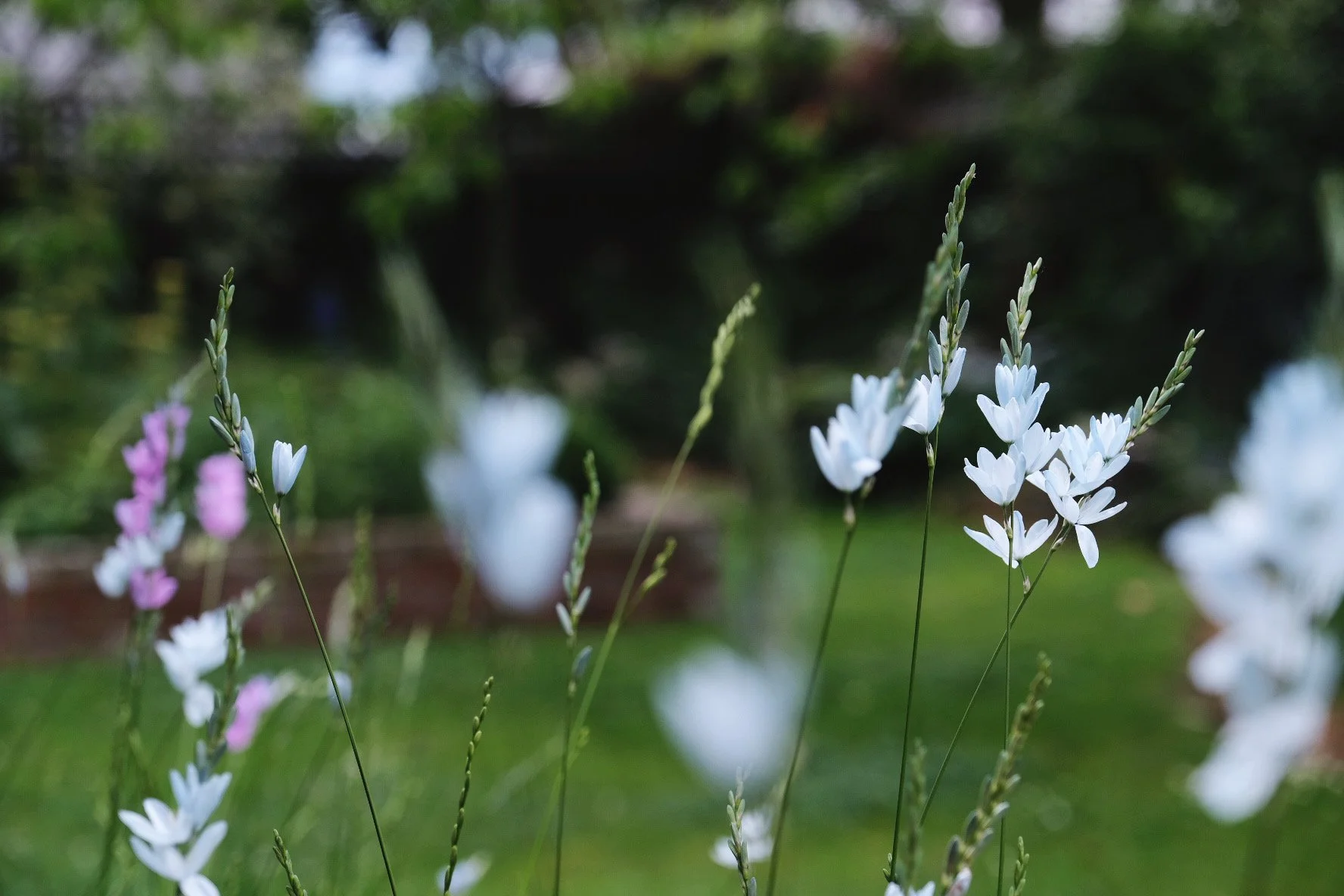Highlights of my late spring garden
/As the growing season really gets into gear, I have found new appreciation for some of the plants I’ve had for a number of years and a pinging of heart strings for a new arrival.
The real patience enforced in gardening is the realisation that your perennials may take a few years to mirror the abundant image in your head. It can be tough going there for a while, as a beginner, arriving to the garden from a society focused on instant gratification.
For instance, while I showered attention on the four flowering stalks of Phlomis russeliana that appeared not long after receiving little plants dug up from my aunt’s garden in 2019, this year, I literally stand at the back door and applaud the mature crop on its third-year magnificence. This satisfying, natural increase in plant stock is how I never get bogged down with spending on established perennial plants. Their growth, expansion and ability for division is hands down worth the dollar value.
Phlomis russeliana
Phlomis (commonly known as Jerusalem sage) is particularly gifted at “the spread”. While it’s a bother for some, I am always grateful for a plant that needs editing back, as opposed to allowing space for weeds. This plant has a fantastical form, with broad fuzzy leaves and alien-looking flowers that dot their way up straight rigid stems, exuding a distinctly Dr. Seuss vibe. They are a nice, early offering, with bold green buds forming in spring to arrive at yellow-accented blooms in late November. For me, no doubt their best attribute is their strong structure within the garden, remaining as a feature long after seeds have formed and offering up interest (and bird fodder) right into winter.
Astilbes in different stages of flower
Astilbe arendsii “Gloria”
It’s been three years now that I have enjoyed employing astilbes to bring flowers and texture to the shadier areas of my garden. Starting with just three plants, I have gleefully divided and spread them through the bed, and this year, really feel that I am reaping the rewards.
The plants disappear entirely over winter, to then boldly leaf up in clumps, sporting dark, fern-like foliage, which conveniently is as great for picking, as it is taking up space in the garden.
For me, the succession of flowering has been a welcome surprise, with my creamy Astilbe arendsii “Diamant” blooming first, followed by the candy floss pinks of Astilbe arendsii “Gloria” and finishing with the taller, deep-pink Astilbe chinensis var. taquetti “Lilac” to come in mid-summer. Their fluffy, peaked blooms then slowly fade to rust as they set seed, continuing to offer interest until the clumps start to recede in late autumn.
Geum chiloense “Mrs Bradshaw”
Geum at dusk
Coming into gardening, I had a pretty strong aversion to the colour purple, hard to believe now given its presence through every bed. Equally, I felt as discriminatory against red, strictly steering clear of any opportunity for it to infiltrate my beds – beyond my cute planter of strawberries. That was, until I was given my first Geum chiloense called “Mrs Bradshaw”.
Last year, I watched her clump leaf up beyond expectation, before budding up with citrus-coloured tips. Then, shooting these flowering stems miles clear of the foliage, they burst into small, intensely tangerine blooms that mature to deep lipstick red. To be honest, she shocked the whole gardenscape with the saturation of her flowers, but there was no denying she was not to be ignored. It was a welcome accent, softer and more ethereal than I imagined reds could be.
In very early spring, I moved the clump to a different area while playing “musical chairs” with perennials in preparation for my new garden beds. Over the last two months, I have marvelled at the beauty the geum brings and have firmly decided she will be divided within an inch of life come autumn and multiplied as part of my new planting scheme. What a true beauty.
Ixia elvira “Duck Egg Blue
Beautiful, delicate ixia with tips of astilbe, geum and penstemon
The last plant I’d like to spotlight in this first part of the growing season is my most recent addition. After my first visit to Welton House as part of Garden Marlborough in 2018, my fresh gardening eyes were left shocked at the mass planting of delicate, but tall Ixia. They were impossible to miss, with their grassy foliage and long slender stems, complete with rows of star-like blooms at their ends, but what was most shocking was that they were blue. Not purple-tinged blue, true turquoise blue!
The memory stuck with me for years and, finally, after some research, I tracked down little bulbs of delicate Ixia elvira “Duck Egg Blue” on Trade Me, combined with a generous parcel of little bulbs from a new gardening friend in the North Island.
All arrived in perfect time for getting them in ground in autumn, but life got in the way, and I am gobsmacked that my ridiculously late planting in July has still garnered me beautiful results. Positioned in large concrete planters for this season, I am excited to inter-plant these in my new beds for next year, visualising the combination of red geums, green and yellow phlomis and pale-blue ixia melting between soft grasses and burgeoning summer perennials to come.
Dreams are free!
This is an expanded version of the article featured in my Stuff ‘Homed’ gardening column for beginners , The Press, Dominion Post and other regional papers on December 16th 2021
All words and images are my own, taken in my home and garden in Christchurch, New Zealand unless otherwise captioned.










